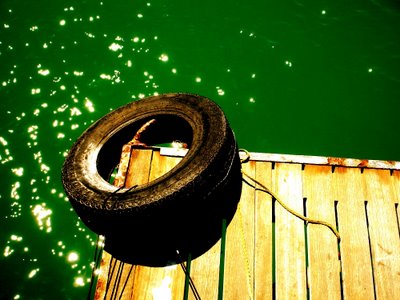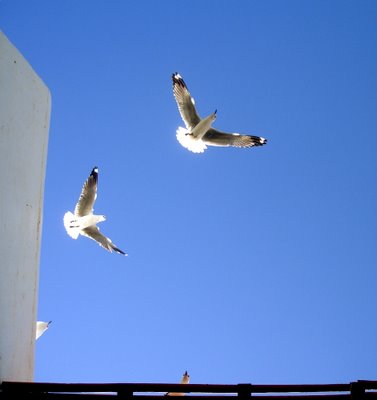
Put the Wind in your Sails
by Nick van der Leek
If you, or a loved one, have been through austerity, then the landscapes of the West Coast will listen to you, and understand you, and you may understand its demands. The West Coast is a place of poverty and hardship, but a life emerges out of the hills, in the light and windy spirit that blows hard at you from the riches beneath the ice cold sea.
Beauty is not easy to find on the West Coast. It’s hidden. But it’s there. It has the severity of the karoo, tempered by the silver sea, and withered by dry winds and hot sun.
There are mists that lie over the scrub, and dunes that drift well inland. It appears to be a lifeless place, with a giant mine its sheer steel silhouette grotesquely poking into the sky, like leftover rigging from a Mad Max movie, whilst its innards are pawing at the metal endoskeleton under the sands of Saldanha Bay.
But then the paradigm shifts. At Langebaan you come across the square white villas of Club Mykonos, sparkling in the sun like a flotilla on a slow wave. It’s quaint, and the barrenness is the perfect place for the stark white walls with their colorful windows and balconies.
Beyond Mykonos are places like Paternoster, which represents the homegrown custom to living on the West Coast even more appropriately. My girlfriend loved Paternoster’s charming simplicity. The fisherman’s huts are also uncomplicated, plastered with white, and sometimes covered in dark gray thatch. It’s a functional, Cape Dutch style that can be seen all over the Cape. The blinding white clusters of these houses accentuate the rugged beauty of the area, and hint at the stormy seas that toss the occupants of these abodes about – they belong invariably to fisherfolk.
Their boats lie on the beaches, and dried fish, called bokkems, dry in the sun, not far away.
 Seagulls wheel in the empty blue sky; some flocks come to these empty shores from as far as the Caspian Sea, drawn by shimmering seawaters filled with migrating shoals of Pelagic fish. On a lonely road a Jackal Buzzard suddenly opens large dappled black and white wings against the sky, lifting quickly with the wind. In the land and the sea, there is life, even if it seems an abandoned, God forsaken country.
Seagulls wheel in the empty blue sky; some flocks come to these empty shores from as far as the Caspian Sea, drawn by shimmering seawaters filled with migrating shoals of Pelagic fish. On a lonely road a Jackal Buzzard suddenly opens large dappled black and white wings against the sky, lifting quickly with the wind. In the land and the sea, there is life, even if it seems an abandoned, God forsaken country.The people have always struggled here. Sheep farmers eek out a marginal existence on land that becomes saltier every year. Miners sweep at the sands in search of diamonds. The fishermen seem merrier, and hardier, and their children shout and chase one another, and play games along the shore. There is history here. There are shipwrecks too, but not as many as one might expect. Near Hondeklipbaai, furious seas drove a ship about 80 metres inland. The shipwreck now lies on its side, on a bed of rocks, blasted by wind and sun, while waves play innocently in the distance.
There used to be thousands of Bushmen here, and many beasts – from Springbuck to Hippopotamus and lion. Some Bushman art suggests that animals like the Eland once looked very different – having bichrome bodies, brown with white necks, legs and heads. Before that, the palaeo-Berg river erupted into the sea 20km from its present location (at Veldrif), into the basin of Saldanha. Then the sea was 25 metres higher, and Sabre toothed cats prowled alongside lions. There are great dunes filled with bones that tell of a different world, filled with tribes and creatures that stir the imagination as one moves through the West Coast’s vast emptiness. .
At Tittiesbaai, around the corner from Paternoster, the pristine wilderness is absorbed by a growing cult of campers, who merge khaki tents and canvas with the landscape in a way that seems subtle and benign. They form a kind of tribe for a few days – gathering around their fires and in their tents, eating fish that the local boys have caught or speared.
On our way back to Cape Town, we passed through Paternoster, and found a large crowd on the beach. A helicopter, rubber boat and vehicle from the NSRI were in the sand, and as we arrived, the dead body of a local man, who had fallen off a boat into the freezing water, was covered and loaded into an ambulance.
The words of Uys Krige that we’d seen on the wall of a nearby restaurant somehow seemed appropriate:
Ken jy die see, Meneer, ken jy die see?
Hy lyk nou soos jou voorstoep blinkgeskuur
En kalm soos min dinge hier benee,
maar, hy’s gevaarliker as vlam of vuur.
Dan se jy nog, Meneer, die vis is duur.
We were offered crayfish for sale, R40 for 1 or R160 for 4, by a local fisherman. It’s illegal to buy them from the locals, but seeing the dead man on the beach made me want to give the local children something. Some were selling shells on long lines of string. It occurred to me that there are plots of land selling for R2 million at Paternoster, and right beside them are desperately poor fisherfolk. How is this possible?
The light is soft and filled with an approaching front – a dark band of cloud rolling towards us. The wind tugs at the car as if to dislodge a feeling from a hardened heart.
The West Coast is a wonderful place to connect to the land, and to slow down so that you can breathe the free air again.

No comments:
Post a Comment